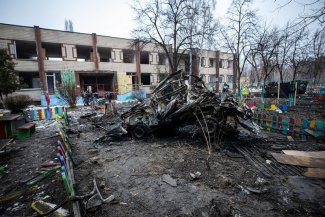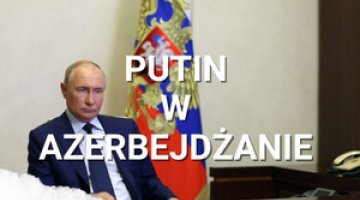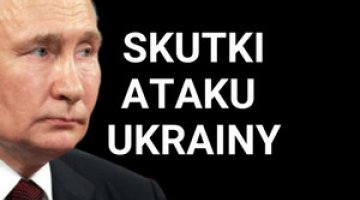Controversy over the Ukrainian landing in Krynky. Day 663 of the war

In recent days conditions for troops in eastern and southern Ukraine have been difficult. Snow or rainfall and temperatures often exceeding zero have turned fields and dirt roads into quagmires. Despite this, the invaders have continued their offensives along selected sections of the front, mostly using small infantry groups. The heaviest clashes are still taking place near Avdiivka, where there is a constant onslaught of enemy infantry supported periodically by tanks on both wings of the Ukrainian grouping. However, the field gains made by the attackers are minimal. Another Russian reserve brigade has recently been introduced into the battle: two armies (the 2nd and the 41st) and the bulk of the 1st Donetsk Army Corps (which is de facto of army strength) are already fully engaged at Avdiivka, not counting the other troops. On a neighbouring section of the front, the invaders are continuing their offensive operations near Marinka. Their efforts are currently focused on eliminating a Ukrainian breakout in the group around the village of Novomykhailivka.
The Russians are also maintaining the initiative along the remaining sections of the front, but without significant success. The situation at Bakhmut is developing worst for the defenders, where the attackers have levelled the entire front line from the Orikhovo-Vasylivka area to Klishchiivka. The ruins of the latter are still in Ukrainian hands, but fighting over the neighbouring hills that dominate the area is already taking place. The crisis in the ranks of the defenders there worsened after the 3rd Assault Brigade left for reorganisation early in December.
On 16 December, the New York Times published an article on the clashes along the River Dnieper near Kherson and Nova Kakhovka. Ukrainian infantry soldiers interviewed by US journalists mentioned heavy casualties and the very difficult conditions on the left bank. It is difficult for the defenders to dig in on the islands and the occupied stretch of coastline, especially in the face of the enemy’s indiscriminate use of aerial bombs; when these explode, they create funnels that quickly fill with water. The newspaper’s interlocutors also highlighted the discrepancy between the actual situation at the Krynky beachhead and the overly optimistic announcements by Ukrainian commentators and politicians, led by President Volodymyr Zelenskiy. The article was met with criticism (a breach of journalistic ethics) from Robert Brovdi, a.k.a. ‘Madyar’, who has commanded a drone unit active over the lower Dnieper since the beginning of the operation to push over the river. As he put it, his unit alone destroyed some 150 pieces of equipment (mainly artillery and armoured vehicles of various types) on the left bank during the two months of fighting, and the Russian troops attacking the bridgehead at Krynky suffered huge losses in killed and wounded. At the same time, he added, the Ukrainian operation to ford the river led to the death of General Vladimir Zavadskiy in the frontline zone, which the enemy admitted at the end of November.
On the night of 15–16 December, the Russians attacked Ukraine with 31 Shahed 131/136 drones, which were launched from several bases towards the central and southern parts of the country. According to a communiqué from the Ukrainian Air Force Command, anti-aircraft defences shot down 30 drones. Over the course of the following night the Russians renewed their attacks, this time using 20 Shaheds, one Iskander-K cruise missile and one Kh-59 guided missile. According to the Air Force Command, all the drones and the Kh-59 missile were neutralised (mainly in the southern regions), while the second cruise missile “missed its target”. One drone fell on a private house near Odesa, starting a fire and killing one person. During the night raids of 17–18 and 18–19 December the invaders used a total of seven Shaheds, all of which were shot down by anti-aircraft defences. In addition, on 18 December, the Ukrainians reported the destruction of one Kh-59 guided missile.
The Ukrainians carried out retaliatory strikes using drones on 15 December (mainly against Crimea) and on the night of 16–17 December (against targets located in Lipetsk, Rostov and Volgograd oblasts). During the latter, their targets included the military airfield at Morozovsk in Rostov oblast, where the 559th Bomb Aviation Regiment is based (the Russians admitted to damaging at least one aircraft). According to the Russian defence ministry’s report on the same night, their anti-aircraft defences shot down a total of 33 drones. On 15 December, Ukraine fired on fuel tanks in Donetsk, resulting in a large explosion and causing problems with petrol supplies in the city.
In recent weeks, the scarcity of battlefield drones has been increasingly discussed in Ukraine. Although it has now been almost two years since the outbreak of the war, these have still mainly been purchased by volunteers for the fighting troops. Deliveries of drones by state institutions remain small and irregular, making it difficult to manage and command these assets. On 17 December, the media described the situation in an infantry brigade fighting near the main Russian strike at Avdiivka. Since the beginning of October, the unit supposedly received only around 700 FPV strike drones and 94 observation drones of various types from the state – under conditions of intense clashes, these quantities are equivalent to just a few days’ use. A few days earlier, the commander of the drone unit of the 3rd Assault Brigade, Mykola Volokhov, had announced that the minimum requirement of his formation for FPV drones (assuming a low-intensity level of positional fighting) was 1000 per month.
On 14 December the head of the Dutch defence ministry Kajsa Ollongren announced that the ministry under her authority had concluded an agreement on 3 October to purchase an additional 15 T-72 tanks for Ukraine. This exercised an option from an agreement signed in November 2022, under which the US and the Netherlands acquired 90 vehicles of this type in the Czech Republic. The Netherlands also pledged a further 11 YPR-765 armoured personnel carriers (the M113 version), 24 small boats and pontoon motorboats (RHIBs) and 14 Bailey bridges. This increased the value of its military aid to Kyiv by €550 million, to €2.6 billion.
On 18 December, the Swedish defence minister Pål Jonson and his Danish counterpart Troels Lund Poulsen signed a memorandum on the joint purchase of CV90 infantry fighting vehicles for Ukraine. Copenhagen announced that it would set aside 1.8 billion Danish kroner (€240 million) to produce them, on the basis of the framework agreement between Sweden and Ukraine concluded during President Zelensky’s visit to Stockholm in July.
On the same day, Rheinmetall reported that the German armed forces had entered into an executive contract with it, worth around €400 million, to supply tens of thousands of 155-mm artillery munitions to be delivered in 2025. This is another executive agreement appended to the framework contract signed in July 2023 by the German arms agency BAAINBw with Rheinmetall to supply several hundred thousand artillery munitions (worth up to €1.2 billion) to the Ukrainian and German armed forces by 2029.
On 16 December, Ukraine’s defence minister Rustem Umierov stated at a meeting of the Congress of Local and Regional Authorities that he expected them to better prepare those responsible for recruiting for military service, and to encourage citizens to participate actively in the fight against the enemy. He also stated that it was necessary to train all those capable of carrying weapons, and warned of the threat in the information space posed by Russia’s moves to discredit the government by publicising the alleged conflict between senior commanders and the President. A day earlier, the Security Service of Ukraine (SBU) reported that it was carrying out ad hoc document checks in restaurants and nightclubs in conjunction with representatives of the conscription commission and the interior ministry. These are intended to uncover persons engaged in criminal activities and evading military service.
On 17 December the head of Ukraine’s military intelligence service (HUR), Kyrylo Budanov, announced that the prospect of increased mobilisation was imminent, and that the recruitment of volunteers by external companies would not provide enough soldiers. He stated that Ukraine’s total mobilisation potential was estimated at 1.1 million men. He also acknowledged that, despite decent pay, motivation to join the army is waning among men, and that even announcing forced mobilisation will not guarantee good-quality soldiers. A day later, General Valerii Zaluzhnyi evaded a question about the effectiveness of the military recruitment programme recently launched by the defence ministry. However, he indicated that it was necessary to improve the mobilisation carried out by the military commissions, as this would guarantee the rotation of soldiers at the front and make up for losses.
On 15 December, HUR spokesman Andriy Yusov challenged Vladimir Putin’s claim that 617,000 Russian army troops were fighting on the Ukrainian front; HUR estimates the enemy’s fighting forces to number around 450,000 men.
The Ukrainian Centre for National Resistance reported on 18 December that the Russians have intensified their search for guerrillas in the occupied areas of Kherson oblast. To this end, they have set up electronic reconnaissance manoeuvre groups tasked with locating the satellite phones of Ukrainian army informants. More than 100 National Guard soldiers have been assigned to comb through the controlled areas.
On 17 December, the SBU announced that it had opened an investigation into the installation of listening devices in the premises occupied by Commander-in-Chief Zaluzhnyi and his colleagues. The eavesdropping equipment was discovered during a routine security check before they had even started their official duties there. On 18 December, the HUR spokesman appealed to the SBU counterintelligence to clarify the matter. In doing so, he added that the enemy was trying to obtain information on Ukrainian plans for combat operations by any available means. Zaluzhnyi himself announced that there was no threat of state secrets being disclosed.
Commentary
- The Ukrainians’ attempts to consolidate their positions on the left bank of the Dnieper, which have been going on for two months, have not yielded any results on an operational scale. The bridgehead at Krynky, which they captured in October, has come under intense artillery fire, and is the target of aerial bombardment. The Ukrainians are certainly suffering significant losses there; however, as they are operating in small assault groups under heavy cover of their own artillery, drones and radio-electronic warfare means, they are still able to cross to the left bank. The Russians, on the other hand, have been doing everything in the last two months to eliminate the defenders from the left bank regardless of their own losses. It seems that, despite the invaders’ command and morale problems, the situation in this section is developing in a manner unfavourable to the Ukrainians, and they may have to evacuate from Krynky in the near future.
- Statements by senior military officers, referring reluctantly to possible new forms of recruitment, indicate that there is a serious personnel crisis in the army, and that willingness to go to the front is declining. For these reasons, military officers see no other option than to conduct mobilisation by military commissions. On the other hand, intensifying coercive mobilisation will be a politically significant challenge, bound to have negative repercussions among the public.





